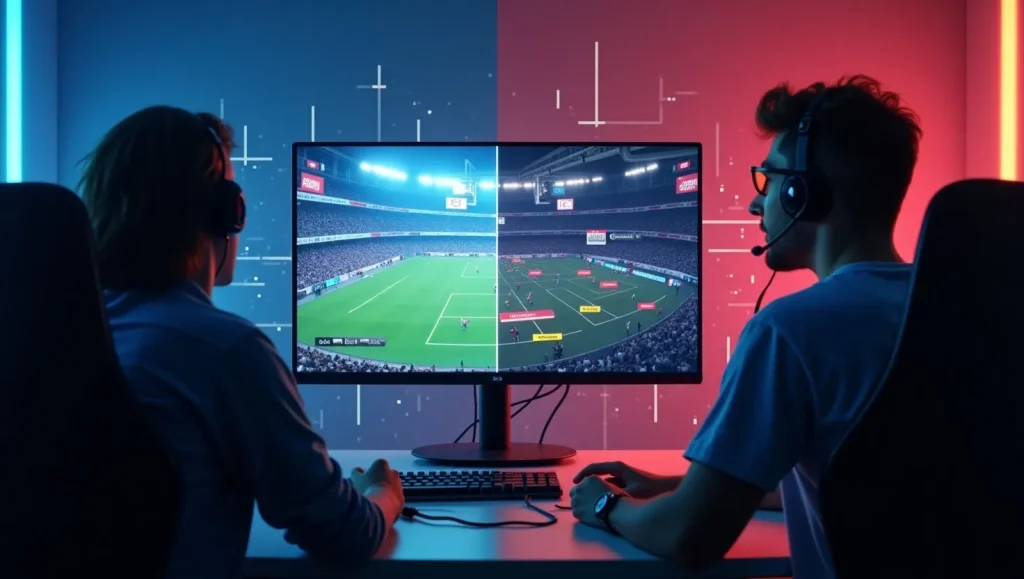
Currently, the newest development in artificial intelligence (AI) is in esports applications with the objective of making great observations and changes on player training, competition, and strategy. From game analytics to virtual coaching, AI gaming firms give birth to innovations to augment player performance and then reform prevailing standards.
Being a revolutionary integration within the e-gaming area has its consequences, improving the terrain for competition, automation, real-time feedback, and predictive modeling. Knowledge of what AI in gaming means to application of ai in esports gives rise to a vision of a future where remaining success depends on data-driven strategies and machine learning. With developing AI, it offers the user unheard levels of accuracy, efficiency, and engagement worldwide.
In this detailed analysis: definitions of AI in gaming will be explored, the developments of AI technologies in the industry will be discussed, and then their negative impacts on competitive gaming will be analyzed. Examples will include AI gaming companies at the forefront and case studies of innovative implementations. The role of AI in esports training and data-driven player development will be described, with other ethical considerations obviously prominent. So this paper intends to give a comprehensive overview of how AI, through machine learning, game analytics, and automation, is reshaping the future of esports across its various levels.
Table of Contents
Understanding AI in Esports Gaming 🎮
The term artificial intelligence (AI) in gaming refers to computer algorithms simulating human intelligence, allowing machines to gradually learn and adapt to situations and make decisions. Those AI tools are capable of analyzing huge amounts of gameplay data in esports, thereby fine-tuning strategies and helping players and coaches in skill refinement. Melding the phenomenal computational power with strategic insight results in a more dynamic, immersive, and productive gaming experience.
AI evolution in gaming owes its existence to the advances made in machine learning, deep learning, and neural networks. Being simple rule-based systems in their infancy, the AI now involves highly sophisticated models that can predict player behavior, automate in-game actions, and give real-time suggestions. It is through these advancements that the set of possibilities for esports was broadened, creating not just a tool for entertainment but a vital component of the competitive strategy and training in itself.
As the market matures, AI’s direct application is becoming more visible in design, matchmaking, skill analysis, and even coaching automation. The sections to follow will investigate these components in detail, showcasing just how far artificial intelligence has pushed the envelope for gaming and esports alike.
Definition of Artificial Intelligence in Gaming
The domain of Artificial Intelligence in gaming comprises a multitude of technologies that are developed for purpose of engendering autonomous, adaptive, and intelligent behavior within virtual environments. Such systems can comprise quite simple patterned responses through to highly complex models with the ability to perform subtle but complex decision-making tasks.
A good example here is the controlled non-player characters (NPCs). The difference in the degree at which these characters are made difficult or realistic has to do with how the characters have been programmed, and this makes them interesting in relation to game play.
For example, in esports, now AI would mean software that analyzes gameplay stats, simulates possible strategies played by opponents, and recommends training plans. These tools include supervised learning, unsupervised learning, reinforcement learning, and natural language processing- techniques directed at imitating or augmenting human reasoning. This lets players in receive personalized analysis of their performances, knowledge of their gaps, and the building of further innovative tactics on the basis of patterns derived from data.
Smart developers are utilizing technology to develop smart gaming environments with interactive esports organizations that are capable of adapting to individual skill levels, game play style, and other personal preferences of users. The outcome is personalization, competitive balance, and increase engagement. However, what many do not realize is that AI is changing the methods players use to train, compete, and innovate, not just how they make games.
Overview of Machine Learning and Its Relevance
The area of machine learning, under which systems can learn from data without any explicit programming, is the subset of artificial intelligence. Machine learning involves algorithms that identify patterns and make inferences based on new inputs of data, getting better with experience. In gaming, machine learning plays an important role in adaptive difficulty setting, player behavior predictions, and personalized experiences.
For esports, this relevance is very significant in continuous refinement of player performance analytics and strategies for the game. For instance, machine learning models can scour thousands of hours of gameplay data to identify trends and correlations that may not be immediately obvious. This makes predictive modeling—which effectively means that one predicts future actions or outcomes—and developing individualized training plans for the specific players.
Moreover, machine learning is a way to automate data collection, processing, and interpretation of complex game analytic datasets. This process subsequently develops the understanding of the coaches and players in terms of strengths, weaknesses, and opportunities for growth. In turn, this empowers esports teams to develop data-driven strategies that are flexible in their application in real time, raising the standard of competition.
The Evolution of AI Technologies in the Gaming Industry
The evolution of AI technologies in gaming showcases an era of rapid innovations influenced by technological improvements and market needs. The initial implementations consisted of simple rule-based NPCs and scripted events, with their major aim to enhance single-player experiences. However, as computational power improved over the years, developers started to implement more elaborate AI elements, such as pathfinding algorithms and simple learning behaviors.
In this new era, deep learning and neural networks broke open the capacity of AI technologies, allowing machines to perceive the multimedia environment, recognize highly complex temporal patterns, and make subtle decisions—abilities needed for any real-time esports application. Research conducted by both OpenAI and DeepMind demonstrated some of the first AIs beating human performance in the games of Dota 2, StarCraft II, and chess.
This evolution has led to a big expansion in AI-based tools for esports. From match prediction engines to real-time coaching assistants, all these serve to embellish the competitive ecosystem. The industry’s continuing focus on automation, personalization, and predictive analytics signals a change towards more intelligent and autonomous gaming environments.
The Impact of AI on Competitive Gaming
The impact AI has made in competitive gaming is monumental in that it has revolutionized the training, strategizing, and how players perform under pressure. AI has the capability of sifting through enormous data sets and providing immediate feedback while then predicting the performance outcomes, allowing players to hone their skills and adapt their tactical approaches continuously. Such integration has led to the evolution of a more data-driven, strategic, and competitive environment.
AI’s strengths are maximally engaged in performance enhancement through game analysis. Coaches and players alike are using AI analytics to detect patterns of insight, track key performance indicators, and customize their strategies on an individual as well as a team basis. These subtle tendencies, which were previously difficult to detect manually, can now easily be targeted for improvements by using analytics.
Moreover, delivering real-time feedback is a game changer, considering the ability of AI systems to provide instant feedback during competitions. Any signs of mistakes would be flagged, important tactical alternations recommended, or some of the more straightforward tasks automated, improving playability through reduced reaction time. The resulting instantaneous assistance is now an opportunity for harnessing competitive advantage previously unimaginable without AI.
Predictive modeling also implicates itself by predicting the opponent’s moves or the outcome of the game using past data on the basis of the player actions. This proactive thinking enables the player or team to strategize against a given opponent or scenario in order to maximize the chances of winning. This is intimately tied to automation in general, which smooths the way for an array of e-sport-related activities from match scheduling to AI referees that keep the general organization of tournaments running more smoothly and fairly.
Enhancing Player Performance through Data Analytics
AI-based analytics provides a platform on which player performance can be transformed in esports. It analyzes extremely in-depth performance data including player movement, timing of decisions, and resource management, leading to powerful cognitions on one’s strengths and weaknesses as well as guided interventions for training.
For instance, it tracks the performance metrics that change over time or catches any irregularities in performance metrics. When the AI finds such a trend, like when a player always tends to overextend during crucial circumstances, specific drills can be incorporated into his entire training cycle but at a different stride. It can be as fine-tuned as possible developing a tailor-fit program instead of casting a wider net into routine models.
Additionally, AI analytics facilitate peer-to-peer or player-to-player comparisons, thus having a realistic benchmark of how mechanical movements stack up against each other, as well as defining trajectory improvements based on these results. It also encourages a healthy dose of competition and motivates the players to keep up the standards in professional esports.
It further opens data analytics into the psychological resilience detectors, capable of determining behaviours linked to mental fatigue or stress. Early signs may be used with remediation mechanisms such as virtual coaching sessions or rest calendars to keep performance levels at their highest. Ultimately, AI brings game analyses into mainstream training and refines them into a data-based process.
Real-Time Feedback Mechanisms and Their Benefits
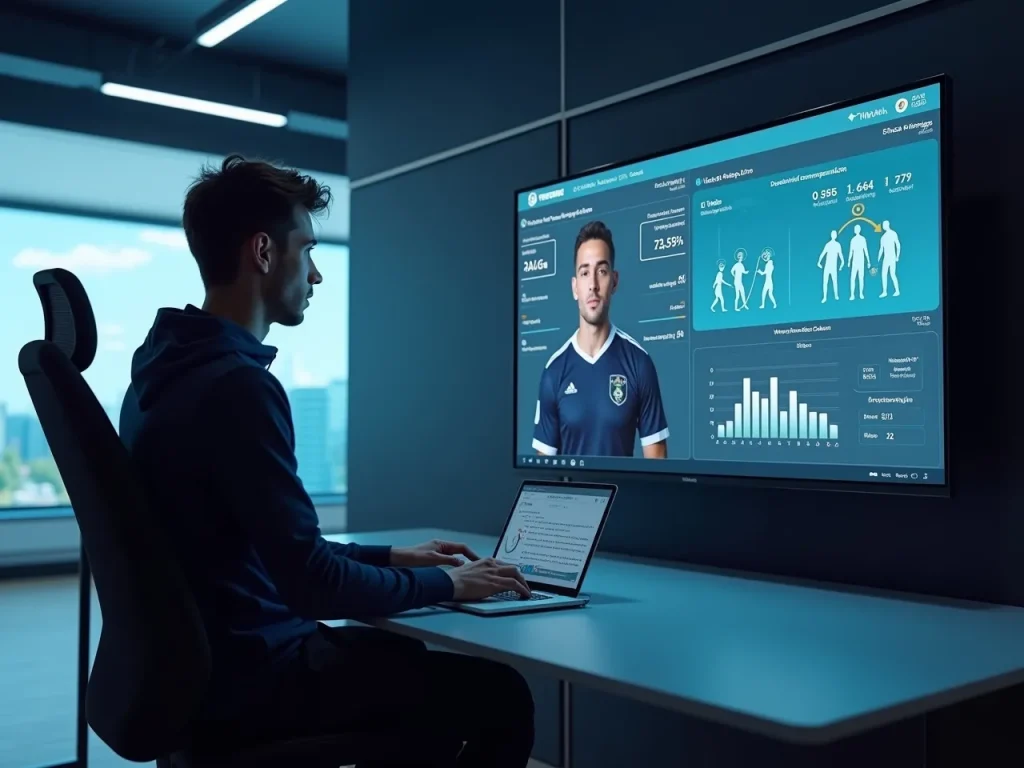
Real-time feedback systems represent one of the biggest contributions AI has to offer competitive gaming. AI systems analyze a match in real time, monitoring gameplay, analyzing decisions, and presenting instantaneous suggestions or warnings. These features drastically improve reaction times and reduce errors, thus providing strategic advantages to players.
For instance, in major tournaments, AI can alert players to positional vulnerabilities or resource misallocation just before they become crucial. This form of instant advice allows players to quickly adjust their strategy and maintain high performance throughout the match. In certain scenarios, this could see AI even perform actions to pull off flawless moves in fast-paced settings, such as FPSs or MOBAs.
However, the benefits of this feedback aren’t just for performing players. They equally promote the scenario in which players, aided by this real-time feedback, avail themselves of multiple learning opportunities for adapting quickly to dynamic game states upon lessons acquired during match play.
In addition to increasing real-time AI feedback in practice sessions to help boost skill and strategical experimentation, players are encouraged to test different strategies and receive real-time feedback to create an environment of continuous improvement. With increasing integration of such a technology into esports ecosystems, it’s likely to become a standard feature in training centers and fully-fledged competition arenas.
Predictive Modeling for Game Strategies
Using AI, predictive modeling assesses potential evolutionary contingencies for a game based on historical data. Countless numbers of variables are analyzed, for example, player tendencies with regards to map control and resource allocation, to accurately forecast opponent moves, team dynamics, or game results.
A little more concretely, predictive modeling helps strategic planning so that players and teams can set counter-strategies based on the expected scenarios. If an AI system determines an opponent’s preferred tactics, players will be better able to preemptively counter those strategies. Such anticipatory leverage often translates into an increase in win ratios and strategic dominance.
On larger scales, predictive analysis contributes toward roster changes, training focus, and meta-game changes. Teams can spot an emerging trend, change their game depending on it, and be ahead of the competition that can only react. This kind of proactive culture fosters continuous innovation and adaptability on the part of esports organizations.
Predictive modeling and analytics are also hand in hand to prepare for tournaments. Being able to simulate different match scenarios allows the team to prepare drafts, map picks, and in-game rotations. In a nutshell, predictive modeling shifts strategic planning from a realm of reactionary guesswork to one of proactive decision-making based on information-a big deal at the highest levels of competition.
Automation in Gaming: Shaping the Future of Esports
AI automation is advancing the operation and in-game aspect of esports. An AI-powered automation system can guarantee fair gameplay and spectator engagement by automating activities such as refereeing and anti-cheating to algorithms for matchmaking and event management.
Regarding the gameplay itself, this automation means that AI agents may act as human-like players through tactical simulation or training partners. These virtual opponents may offer players with an adjustable level of challenge that remains consistent and ensures that players can practice regardless of their skills. Automation in more advanced forms includes creating AI highlights, commentary, and post-match analysis to foster a better viewing experience.
In training, AI-powered bots and virtualiate coaches automate basic drilliing and tactical being processing, freeing up human coaches for discussions of strategy at a higher level. This creates an impetus for open, scalable, personal training programs available for more people, paving the way toward democratizing esports education.
In the future, tournament operations will bring AI-powered automation to bear on scheduling, logistics, and running real-time broadcast events. As further AI-driven systems evolve, they will create a more effective, fair, and entertaining ecosystem sustainable for growth and innovations in esports.
Notable Examples of AI in Esports
Those innovative implementations of artificial intelligence in esports have demonstrated the quality and number of new technologies from various game companies and research institutions. They prove how artificial intelligence enhances gameplay, training, and competitive fairness using today’s leading technologies. Information from its successful case studies provides a sneak peek into the present status and future promise of such solutions in the industry.
Several leading AI gaming companies are developing applications that serve the esports industry. Meanwhile, there are several pioneering AI systems that have defeated professional players, built virtual coaches, even integrated real-time analysis engines into live contests. With these developments, AI is able to undergo a complete transformation of the competitive environment.
All this helps to determine how AI will not only supplement but indeed drive innovation in competition and entertainment value in esports.
Leading AI Gaming Companies and Their Contributions
These few companies work jointly with right AI gaming technologies in creating products beneficial to trainer activities, game design, and fair play. OpenAI, in particular, has caught attention because of its successes building AI systems for one of the hardest strategy games, Dota 2, in which another of its AI bots defeated top human teams.
DeepMind, Google’s AI wing, produced AlphaStar, an entity that demonstrated superhuman play in a real-time strategic battle arena game defined by its complex tactical dynamics, StarCraft II. Their work illustrates the capacity of machine learning in addressing multilayer strategic problems and simulating human-like decision-making.
Other AI gaming companies include:
GamerSensei’s virtual coaching, employing AI analysis;
Second Spectrum’s real-time tracking and analytics;
FACEIT’s AI integration for gaming anti-cheat and matchmaking optimization;
With all these companies, more AI-powered tools will be available for helping players develop, spectators engage, and keep the game fair.
Virtual Coaching: AI-Powered Training Programs
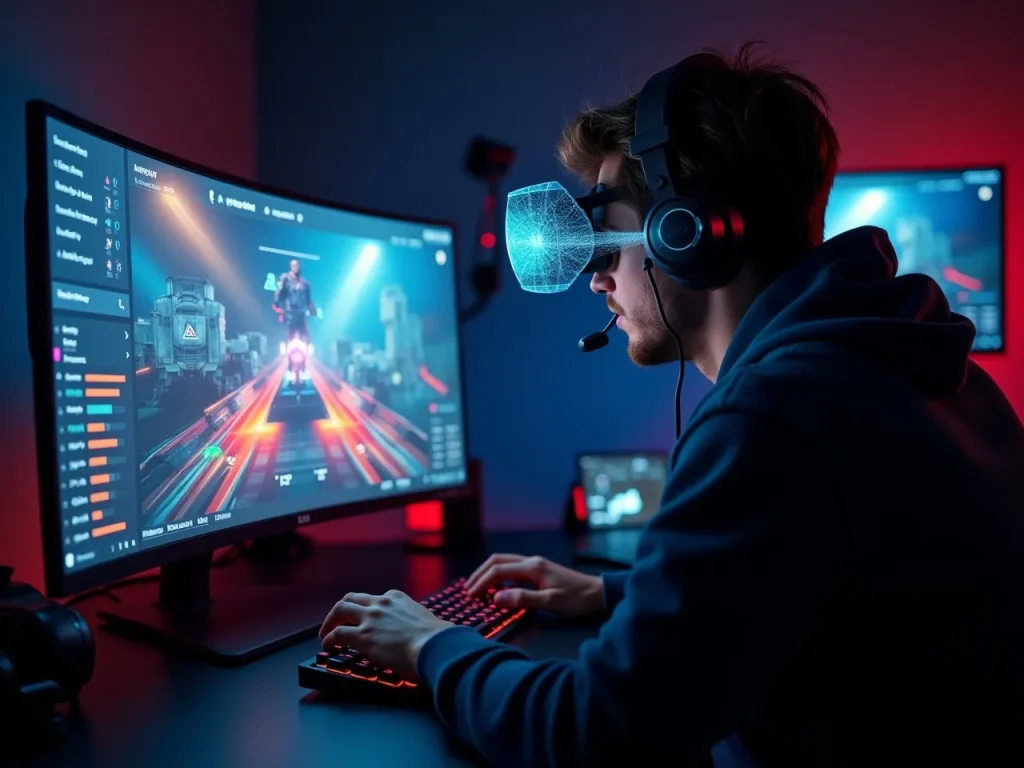
The AI-based virtual coaching platforms are reshaping the entire methodology of training and skill acquisition by players. Such systems analyze recordings of play, determine weaknesses, and issue individualized plans for improving performance without the intervention of a human coach. They generally use a machine learning model, which fine-tunes itself according to the progress of the player and modifies the difficulty level and focal points for improvement with time.
For example, Mobalytics and Gamer Sensei look at the capabilities and aspects of decision-making, positioning, and mechanical skills by means of AI. Then create huge reports and actionable insights so players will “develop” muscle memory and tactical awareness correctly. This called democratizing high-end coaching means really valuable training top-tier style, at any skill level.
Virtual coaching further extends to team competitive online games where AI studies the team’s coordination, communication, and execution of strategies. The coaches could then evaluate together with their players based on the reports as strong foundations for continuously improving athletes with an evidence-based approach. These tools will continue to improve and eventually become part of the training premise not only for shy amateurs but also for professional players.
AI-Driven Strategies for Esports Training
AI is really changing the paradigm of esports training by bringing strategy development into the pipeline of data and personalized training. Areas covered in the strategies are such as Game analytics, long-term AI-based training model development, and using predictive models that include possible competitive outcomes. All these form a solid foundation on which to mold player skills and team performance.
The use of data-driven approaches can move athletes away from intuitive guessing e to adopt science-backed strategies. AI is parsing through thousands of variables, pointing out those that work better and suggesting adjustments matched to each individual player’s style. This accelerates the acquisition of skill and mastery of tactics, which are essential in high-stakes competitions.
Long-term benefits of AI integration include the establishment of a continuous feedback loop: The performance data informs training in real time, whereas updated strategies are incorporated into game-play improvement. Such a cyclical process would promote sustainable development, adaptation, and resilience to emerging game metas.
Data-Driven Approaches to Improve Player Skills
Data-driven learning methodologies join forces with artificial intelligence to help optimize every detail regarding player performance. Rather than depending solely on traditional coaching methods or trial-and-error techniques, these data-driven programs enable athletes and amateurs to work on their respective improvement plans backed by a rational insight obtained from gameplay data.
What this entails, then, is an overall setup with parameters that include very small units of information such as reaction times, accuracy telling, patterns of movement, and delays in decision-making. AI algorithms analyze this information for pinpointing specific areas of improvement for the player concerning assigned variables like aiming, positioning, and teamwork; they then design drills and coursework to work on the identified weaknesses and track improvement.
Data-driven training also permits players to try out different strategies in a safe, analytical environment: they can try variations, assess results, and substantiate a revised approach with evidence. This scientific foundation in training directly supports a continuous learning and adapting mentality—the hallmark of any successful esport professional.
The Role of Game Analytics in Performance Measurement
Before game analytics, only subjective performance evaluations existed in esports. The systematic observation and analysis of gameplay data by analytical tools bring forth strong insights that few can perceive without actual data. These allow players and coaches to study performance trends, set attainable benchmarks, and personalize training methods.
Typically found in an analytics dashboard, kill-death ratios, resource control, map awareness, and decision-making efficiency are generally some metrics that will populate the dashboard. Heat maps and timeline charts help visualize patterns, recurrent errors, and tactical advantages. Such transparency helps players prioritize areas to work on and adapt their strategies accordingly.
As game analytics aid post-game evaluations by highlighting key moments that led to the game’s outcome, it also allows debriefing sessions to rely more on data analysis than on subjective observations. This enforces a culture of transparency and accuracy in training. In general, game analytics have proven invaluable for objective measurement of performance and for feeding any strategic refinements.
Long-Term Benefits of AI Integration in Training Regimens
The use of AI in eSports training does not just enhance the skills of players; it builds a culture of data, encourages flexibility, and minimizes dependence on subjective judgment. In the long run, players realize how they are able to use the game mechanics and strategies.
Scalability would have to be the most crucial advantage-a platform based on AI would cater to varying skill levels and paces of learning. It would allow for continuous growth since it offers consistent, personalized coaching that adapts as the player improves. This really is a huge advantage due to how quickly popular esports titles change in meta.
Another long-term benefit is resilience and mental toughness, which are nurtured through AI systems that can analyze emotional states, energy levels, and patterns of consistency, allowing for guided interventions like restorative time-outs and mental conditioning. These holistic interventions promote sustainable performance and handle burnout.
The application of AI-based training tools has prepared organizations for an unpredictable dynamic of competitive esports, cementing the role of adaptation and strategic depth. AI must become an integral part of training so that talent development will not be lagging behind technological advancement to shape the bright future of esports.
Challenges and Ethical Considerations of AI in Esports
Though it has great potential in enriching competitive gaming experiences, AI brings some difficult challenges and ethical dilemmas. Fairness, transparency, and human insights should be in a position to coexist with fairly advanced AI applications in the same way that all their predecessors did. It is the business of proactively addressing these factors in the future and holding them up to the integrity and trust of the communities in esports.
Fair play, integrity, however, become paramount concerns- cheating, of course, is one of manipulation. Complex AI tools might be misused to entail unfair advantages or even outcomes. Well, robust and well-thought-out anti-cheat systems need to be developed, complemented by the most transparent policies concerning AI use towards the realization of competitive fair play.
The interplay between human insight and AI must also be considered closely. For instance, AI overdependence may lead to diminished human reliance on intuition, creativity, and psychological resilience-the characteristics found in a great player. Most importantly, the artificial intelligence complementing, rather than usurping, human judgment is fundamental to preserve the integrity of the sport itself.
The upcoming challenges from here will pertain to accessibility of AI tools, impartiality against algorithmic bias and protection of player privacy. Regulation and principles on ethics will be keys as the AI technology develops in the ecosystem of esports. Only through thoughtful application can the industry harvest the complete powers of AI while relegating its risks in maintaining a fair, inclusive environment..
Conclusion
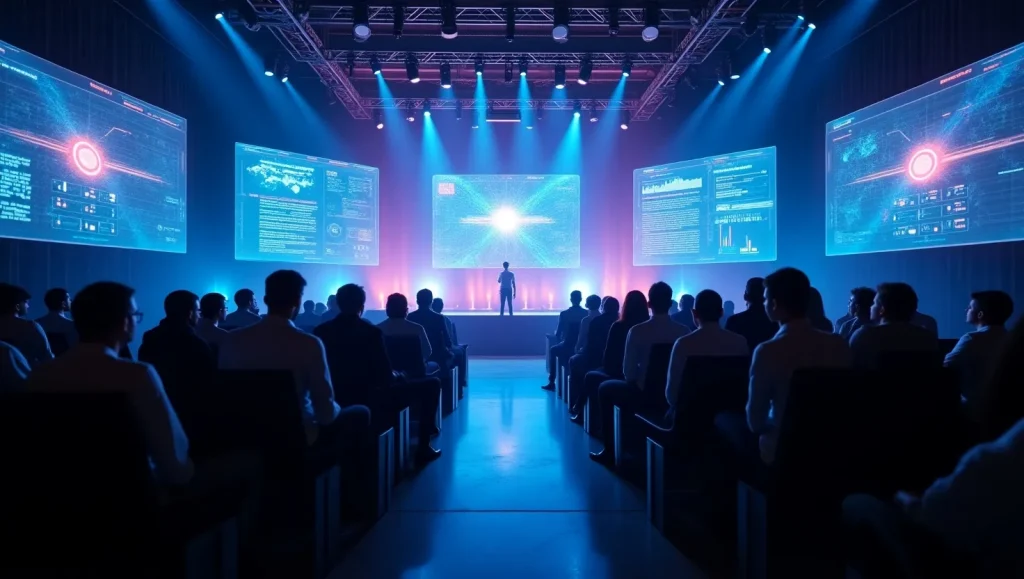
Artificial intelligence is changing the whole paradigm of esports through the avenues of superior training, superior tactical insight, and dynamic competition. With tools such as game analytic techniques, machine learning, virtual coaching, and automated coaching targeted toward players, coaches, and organizations, AI technologies are in a league of their own for improving performance and fairness.
With the continuing innovation by leading AI gaming companies backed with real-life success stories, the future of esports stands to receive a giant thrust from data-led decision-making and intelligent automation. This transformation could be the next chunk added to the ever-growing basket of innovations with their ethical considerations. The aforementioned said advent is sure to make esports a fair and entertaining competition full of surprises for AI players, keeping an interesting competition status at the frontline of technology and entertainment..
Alongside all these aspects, artificial intelligence in esports is another revolution that will impact training, performance strategy, fair play, and spectator experience. The industry is developing a more accurate, engaging, and adaptive environment for players and fans by leveraging machine learning, game analytics, and automation.
While AI continues to advance, it has nothing but great promises-from fine-tuning skills to forecasting game results, even facilitating operations-all amidst stirring up some serious ethical questions to be debated thoughtfully. It becomes mandatory to embrace this technology evolution to secure the energetic future of esports as a live, continually changing, and all-in-one venue of world entertainment.
FAQS
How does AI contribute in eSports?
AI serves as a player training vehicle for the pro-players and match analysis, cheat detection, automated broadcasting, and fan engagement. With AI, players practice their skills, coaches elaborate on strategies, and organizers enrich the viewer experience.
Can AI help eSports players train better?
For sure! AI training bots replicate real enemies, honing their gameplay analysis skills to develop a better playing method. With something like **OpenAI`s bots**, say, **OpenAI Five for Dota 2**, it is a possible training platform where players compete against kind AI.
Is AI useful to identify cheating in eSports?
Indeed, player behaviors are evaluated by AI algorithms for detecting aimbots, wallhacks, and other cheat-like cheating methods using machine-learning patterns in identifying suspicious behaviour from companies like Valve (VAC) and Riot Games.
What are the advantages of AI in eSports broadcasting?
The IA innovated automatic highlight generation, angle cameras, and live comments for streaming events. Some of the tools for AI include IBM Watson and NVIDIA’s AI to insert stats, highlights, and dynamic illustrations in the middle of an event broadcast.
AI can predict match outcomes in eSports.?
By analyzing player stats, team history, and in-game data, AI models predict match results. The unpredictability of eSports, however, poses a challenge to achieving 100% accuracy in those predictions.
Are AI completely replaceable for eSports players?
It can happen in no sense. AI is mostly good training and analysis tool. Bots like AlphaStar in Starcraft II can outplay humans, but creativity and flexibility are human beings’ trademarks to excel in competitions.
How does AI provide personalized experience for fans in eSports?
The AI-oriented platforms and channels recommend all kinds of services, from streams and merchandise to in-game purchases. During live events, chatbots and virtual hosts interact with the fans.
What is the future for AI and eSports?
“Bright futures for smarter coaching assistants, hyper-realistic AI opponents, further integration VR/AR, and deep analytics.” It may include “talent scouting” and “team strategy optimization via assisted skill prediction.”
AI-assisted eSports tournaments or not?
For sure! AI vs. AI tournaments include competitions like **Dota 2’s OpenAI Challenge**. Such events are meant to test the limits of advanced training methods’ development.
Which are the AI issues in eSports?
These range from data privacy to cheating made possible via AI and job losses, which are felt the most by casters, and analysts. Fairness and transparency of AI tools become overarching concerns for the industry.
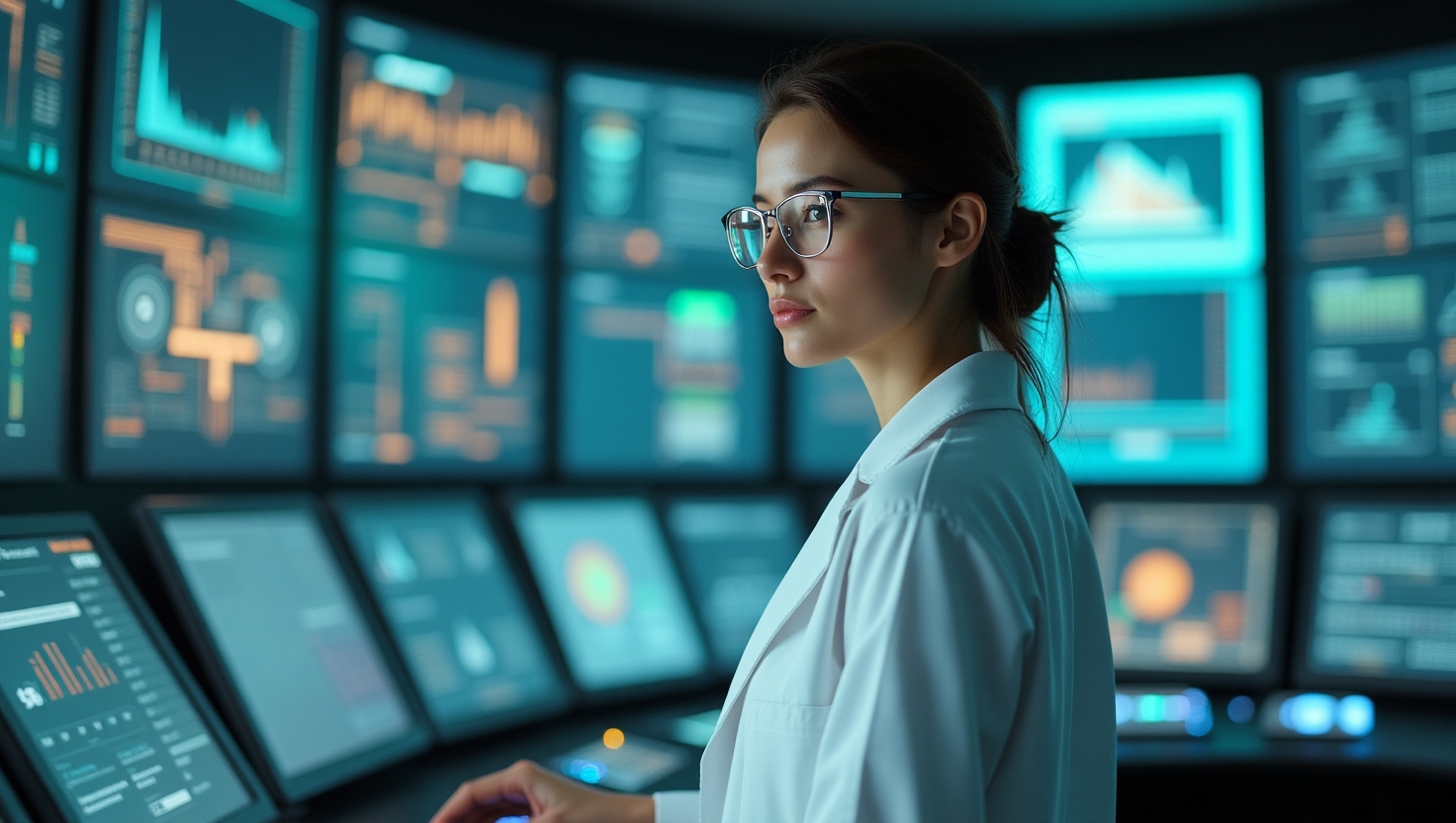
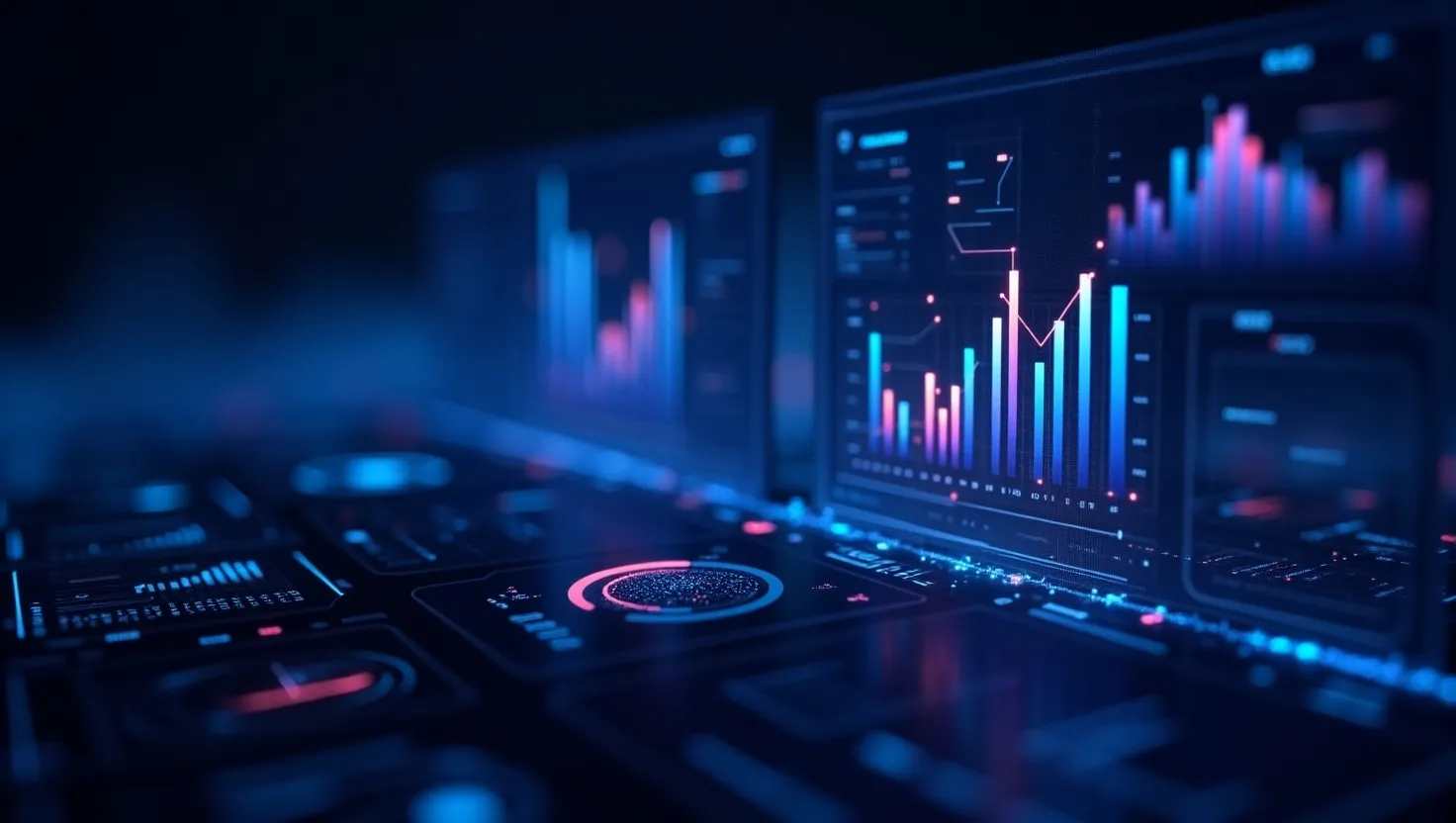
Good content 👍
[…] make gaming more sustainable. Data centers use AI to cut energy use by up to 30%. This supports AI in esports efforts to be […]